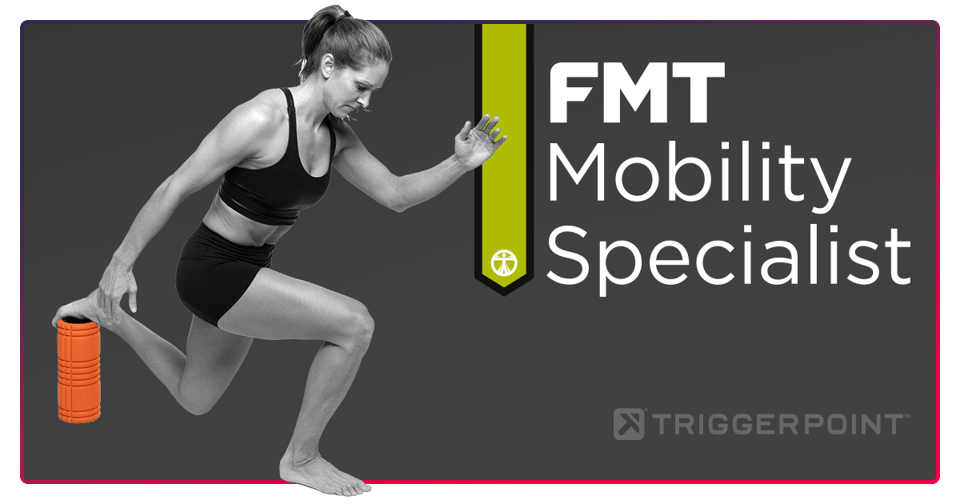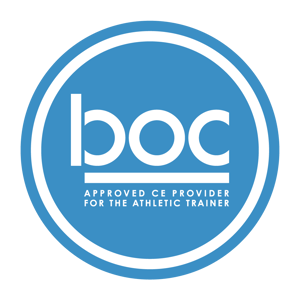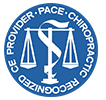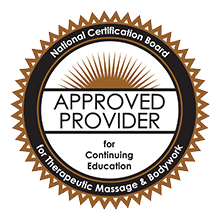FMT Mobility Specialist

Description
FMT Mobility Specialist Course is an evidence-informed self-myofascial rolling course that advances students’ understanding of mobility techniques for their patient’s and client’s needs. FMT Mobility Specialist offers a practical framework and a systematic approach for determining why, how, when and where to roll for movement preparation, movement recovery or pain relief. Assessment systems will be presented examining concepts of joint by joint mobility, stability and fascial integrity. These systems will be utilized to direct fun and innovative lab experiences throughout the course.
FMT Mobility Specialist methodically integrates a review of the current literature and demonstrates the science behind rolling for improved rehabilitation or performance outcomes. Current concepts such as rolling with percussion/vibration will be explored with innovative solutions provided for common movement, performance and recovery challenges.
This course is intended for health and fitness professionals with all levels of prior self-myofascial rolling experience.
Functional Movement Training (FMT) Certification courses are taught by industry leading experts in movement assessment, performance and rehabilitation.
Note: Tools are not provided with this course.
Available Course Credits
| Alaska State Board of Chiropractic Examiners | 6.00 | ||
| Alaska State PT & OT Board | 6.00 | Expiring on June 4, 2026 | |
| Arizona State Board of Physical Therapy | 6.00 | Expiring on June 4, 2026 | |
| Arkansas State Occupational Therapy Examining Committee | 1.00 | ||
 |
Athletic Trainer Program | 6.00 | |
| Chiropractic Physicians’ Board of Nevada | 6.00 | ||
| Colorado Division of Professions and Occupations | 6.00 | ||
| Colorado State Board of Chiropractic Examiners | 6.00 | ||
| Connecticut Department of Public Health | 6.00 | ||
| Connecticut State Board of Chiropractic Examiners | 6.00 | ||
| Delaware Board of Chiropractic | 6.00 | ||
| Delaware Division of Professional Regulation | 6.00 | ||
| Delaware Examining Board of Physical Therapists and Athletic Trainers | 6.00 | Expiring on June 4, 2026 | |
| Department of Commerce, Community, and Economic Development | 1.00 | ||
| District of Columbia Board of Chiropractic | 6.00 | ||
| District Of Columbia Department of Health | 6.00 | ||
| Georgia State Board of Physical Therapy | 6.00 | Expiring on April 25, 2026 | |
| Georgia State Professional Licensing | 6.00 | ||
| Hawaii Board of Physical Therapy | 6.00 | Expiring on June 4, 2026 | |
| Idaho Bureau of Occupational Licenses | 1.00 | ||
| Idaho Division of Occupational and Professional Licenses | 6.00 | ||
| Idaho Physical Therapy Licensure Board | 6.00 | Expiring on June 4, 2026 | |
| Idaho State Board of Chiropractic Physicians | 6.00 | ||
| Illinois Department of Professional Regulation | 6.00 | ||
| Illinois Medical Licensing Board | 6.00 | ||
| Indiana Board of Chiropractic Examiners | 6.00 | ||
| Indiana Physical Therapy Board | 6.00 | Expiring on June 4, 2026 | |
| Iowa Board of Chiropractic | 6.00 | ||
| Iowa Bureau of Professional Licensure | 6.00 | ||
| Kansas State Board of Healing Arts | 6.00 | ||
| Kentucky Board of Physical Therapy | 6.00 | Expiring on June 4, 2026 | |
| Maine Board of Chiropractic Licensure | 6.00 | ||
| Maine Board of Occupational Therapy Practice | 1.00 | ||
| Maine Board of Physical Therapy | 6.00 | ||
| Maryland Board of Chiropractic Examiners | 6.00 | ||
| Massachusetts Board of Allied Health Professionals | 6.00 | ||
| Massachusetts Board of Registration | 1.00 | ||
| Massachusetts Board of Registration of Chiropractors | 6.00 | ||
| Michigan Board of Chiropractic | 6.00 | ||
| Michigan Board of Occupational Therapy | 1.00 | ||
| Michigan Board of Physical Therapy | 6.00 | Expiring on June 4, 2026 | |
 |
Minnesota Board of Chiropractic Examiners | 6.00 | |
| Minnesota Board of Physical Therapy | 6.00 | ||
| Missouri Advisory Commission for Physical Therapists | 6.00 | Expiring on June 4, 2026 | |
| Missouri Division of Professional Registration | 6.00 | ||
| Missouri State Board of Chiropractic Examiners | 6.00 | ||
| Montana Board of Chiropractors | 6.00 | ||
| Montana Board of Physical Therapy Examiners | 6.00 | Expiring on June 4, 2026 | |
| Montana Department of Labor and Industry | 6.00 | ||
 |
NCBTMB | 6.00 | |
| Nebraska Board of Examiners in Chiropractic | 6.00 | ||
| Nebraska Board of Occupational Therapy Practice | 1.00 | ||
| New Hampshire Board of Chiropractic Examiners | 6.00 | ||
| New Jersey State Board of Chiropractic Examiners | 6.00 | ||
| New York State Board of Chiropractic | 6.00 | ||
| North Carolina Board of Chiropractic Examiners | 60.00 | ||
| North Carolina Board of Physical Therapy Examiners | 6.00 | Expiring on June 4, 2026 | |
| North Dakota Board of Physical Therapy | 6.00 | Expiring on June 4, 2026 | |
| North Dakota State Board of Chiropractic Examiners | 6.00 | ||
| North Dakota State Board of OT Practice | 1.00 | ||
| Ohio State Chiropractic Board | 6.00 | ||
| Oregon Board of Chiropractic Examiners | 6.00 | ||
| Oregon Board of Physical Therapy | 6.00 | ||
| Pennsylvania Bureau of Professional and Occupational Affairs - Physical Therapy | 6.00 | Expiring on June 4, 2026 | |
| Physical Therapy Governing Board New Hampshire | 6.00 | ||
| Rhode Island Board of Examiners in Chiropractic | 6.00 | ||
| South Carolina Board of Chiropractic Examiners | 6.00 | ||
| South Carolina Board of Occupational Therapy | 1.00 | ||
| South Carolina Board of Physical Therapy | 6.00 | Expiring on June 4, 2026 | |
| South Dakota Board of Chiropractic Examiners | 6.00 | ||
| State of Alabama Board of Physical Therapy | 6.00 | ||
| State of Rhode Island Department of Health | 12.00 | ||
| Tennessee Board of Physical Therapy | 6.00 | Expiring on June 4, 2026 | |
| Utah Chiropractic Physicians Licensing Board | 6.00 | ||
| Utah Physical Therapy Licensing Board | 6.00 | ||
| Vermont Board of Chiropractic | 6.00 | ||
| Virginia Advisory Board On Occupational Therapy | 1.00 | ||
| Virginia Board of Medicine | 6.00 | ||
| Virginia Board of Physical Therapy | 6.00 | Expiring on June 4, 2026 | |
| Virginia Secretary of State | 6.00 | ||
| Washington Chiropractic Quality Assurance Commission | 6.00 | ||
| Washington State Board of Physical Therapy | 6.00 | ||
| Wisconsin Occupational Therapy Affiliated Credentialing Board | 1.00 | ||
| Wyoming Board of Physical Therapy | 6.00 | ||
| Wyoming State Board of Chiropractic Examiners | 6.00 |
Learning Objectives
- Identify and discuss the history of self-myofascial release/rolling (Self-MFR) techniques.
- Compare and contrast current foam rolling research studies.
- Discuss and critique neurological vs mechanical physiological effects of self-myofascial rolling techniques.
- Compare variables of ‘how’ we roll, including depth, duration and rate of rolling and the effects on the underlying tissue and patient/client outcomes.
- Compare variables of ‘why and when’ we roll, including for movement preparation, movement recovery and pain relief.
- Discuss, screen and apply joint by joint mobility and stability MFR techniques to explore a system of ‘where to roll’.
- Discuss, screen and apply facial chain mobility MFR techniques to explore a system of ‘where to roll’.
- Discover and experiment with various self-myofascial release application techniques for common complaint locations such as spine, upper and lower extremities.
Course Content
| FMT Mobility Specialist | Module |
